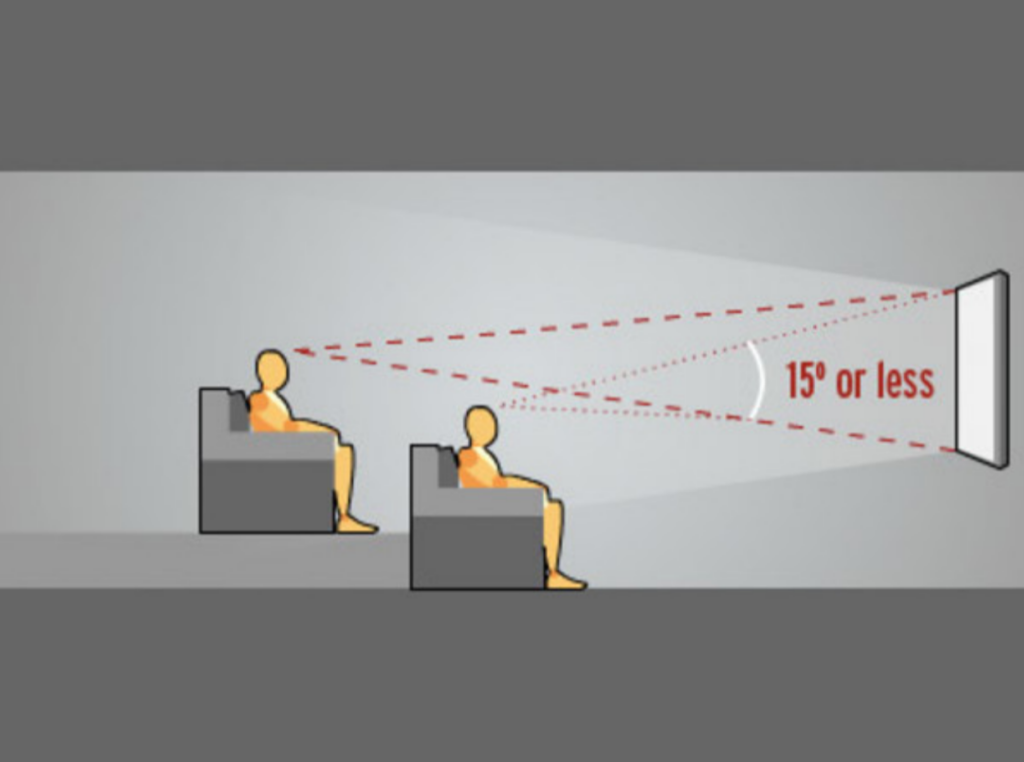Interesting numbers/comments being thrown around for THX/HDTV horizontal viewing angles, visual acuity, 4K has no advantage over 1080, etc.:
The MINIMUM recommended THX HDTV viewing angle is 40 deg horizontal (specific to 16:9 format):
For optimal viewing, you want your line of sight to be more or less aligned with the center of the screen. We suggest 15 degrees or less, above or below the center, as seen in the image below. For 4K or ultra-high definition (UHD) TV models, they have various layers of LCD enhancement that focus […]
www.thx.com
At this distance the difference between 1080 and 4K is READILY discernible. The visual acuity charts concur. And the view is glorious.
Don't put that set too far away, AND or above the fireplace mantle as most households do

. Waste of money on the set and on chiropractor bills.
Recommended viewing angles
20th century fox = 45
SMPTE = 43.5
SMPTE Closest acceptable = 61.8
THX furthest = 36
From:
Horizontal Viewing Angles The horizontal viewing angle is the angle subtended by a straight line from each side of the screen to the seating position. The main two standards in the commercial world are the SMPTE and THX specifications as summarized in the diagram below: 36 degrees from the last...

www.acousticfrontiers.com
to quote the juicy bit:
Visual acuity data give us useful information about when a person should be able to appreciate the full benefit of different resolutions.
- 480p – 4.1x width
- 720p – 2.7x width
- 1080p – 1.7x width (equivalent to 33 degrees viewing angle with a 2.35:1 screen)
- 4k – 0.8x width (over 60 degrees viewing angle with a 2.35:1 screen!)
Conclusion:
If you are at recommended viewing angles from THX, SMPTE or 20th Century Fox, you are right at the margin between 1080p and 4K, assuming your vision is 20:20 - if it is better you may tend towards needing higher res, if it is worse, then 1080p is likely to be more than enough.
I'm not talking about IMAX, as I don't have IMAX material - that is a whole different ball of wax.
We are talking standard TV and Cinema formats, and the standards for standard Cinemans (as published by SMPTE, THX and Fox)
Whicher way you look at it, even for a 62 degree viewing angle... you still don't need 8K !
Having said that, I do know people who have visual acuity substantially better than 20:20.... who can already read a sign by the roadside, when I can scarcely tell that there is a sign present.... - if you or one of your regular guest viewers are of the sightingly gifted persuasion - then 8K might absolutely be needed!
No one in my family has 20:20 without corrective lenses... and some family members are well below 20:20 even with glasses/contacts.
So, yes there are variables - but the base assumption that higher resolution is needed/required should be questioned, I think a lot of people are wasting time and money in a flawed search for a higher resolution that will bring them no benefit.


 . Waste of money on the set and on chiropractor bills.
. Waste of money on the set and on chiropractor bills.
